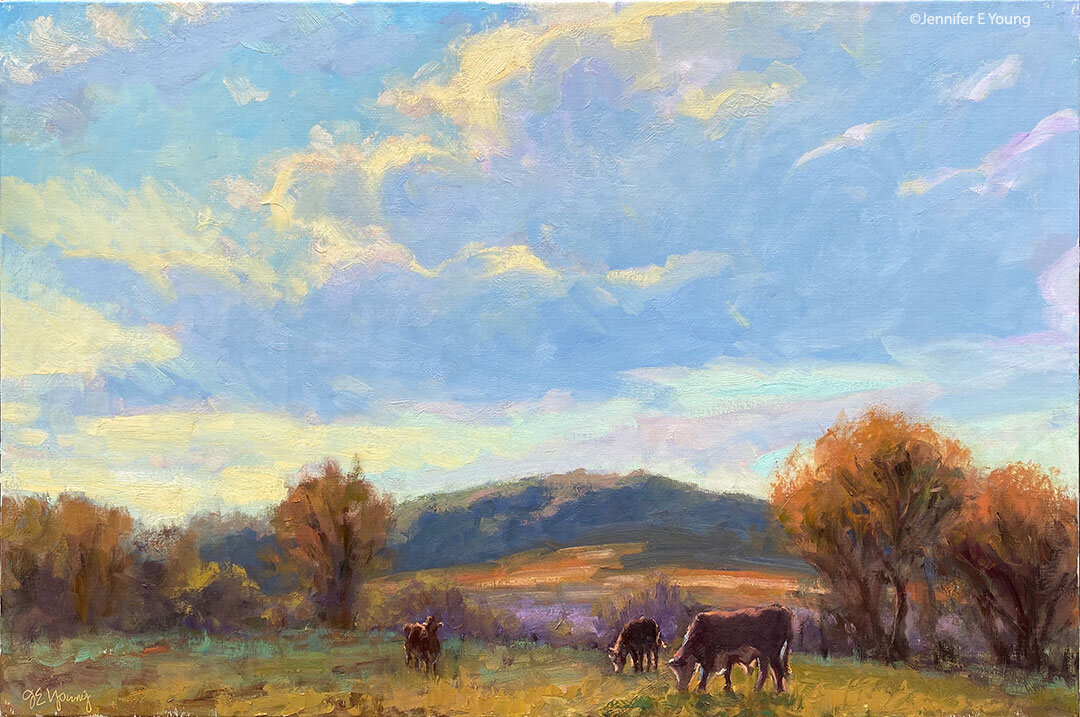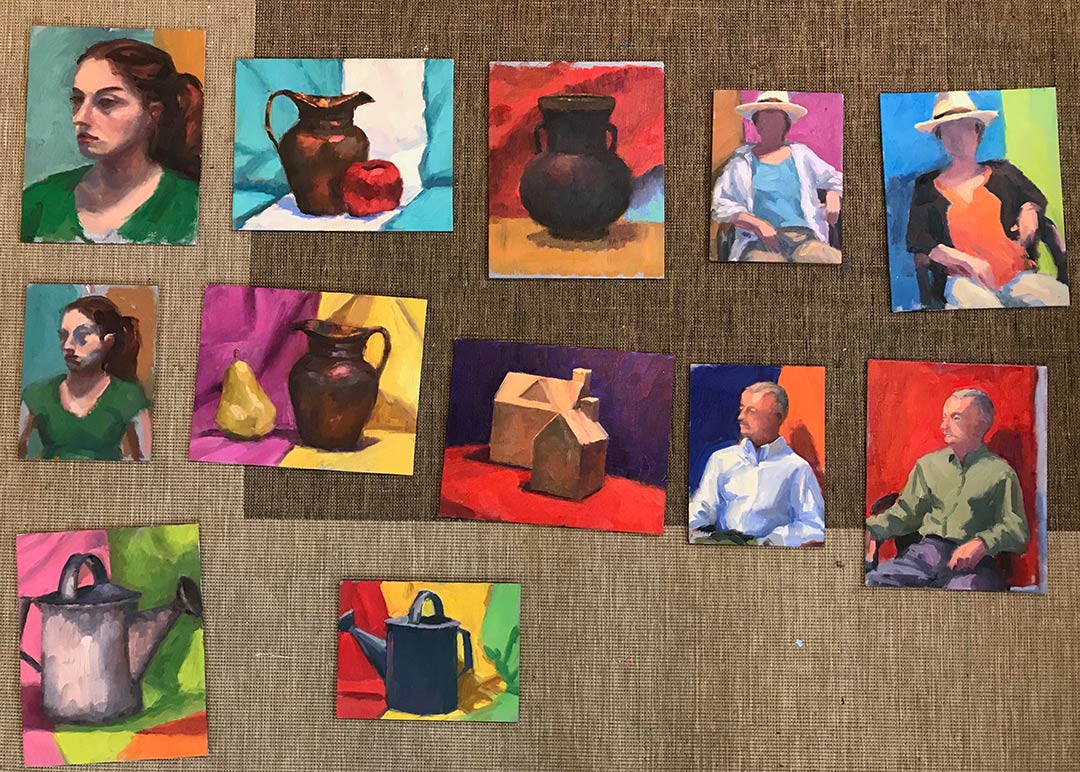October Maples
/When I woke up the other morning it was so stunning outside that I decided to leave the studio for a bit and do some plein air painting in my Bellevue neighborhood. Dave and I passed these gorgeous maples on Newport Drive during our walk in the 'hood the previous evening and I made a mental note to check them out again in the morning :
This is not the greatest of photos, so I will try and re-shoot this tomorrow morning when the lighting is better. There are some areas where I might've wanted more refinement, but I am going to sit with this a bit and see how I feel about it when I can look at it with fresh eyes.
One thing I realized from the timed exercise I mentioned in my previous post was just how long my plein air paintings look like absolutely nothing. In fact, a common occurrence with me lately is the feeling of a sinking heart as I look at the confusing mess that is my painting and wonder if I might be better off just scrapping the whole thing. Bleh!
But then I'll think something like, "Just work on it a little more and then you can quit if you want to." Only a few strokes later (if they are good strokes) I find myself excited again and some logic begins to emerge. It's almost as if something switches in my brain (on or off? I don't know.) Maybe I just let go of the outcome and relax enough that somehow I can see the scene before me not as an overload of "things", but as a rhythmic pattern of lights and darks, colors and shapes.
This is not to say that there aren't areas for improvement in this painting. But at least I managed to get the impression of place down, which, based on how the painting progressed in the earlier stage, was quite a surprise to me. I guess the moral of that story is not to give up too soon. Some paintings are indeed "false starts" and probably just doomed to fail. But then there are those that have potential and a solid start and just require more patience and relaxed focus. Bargain with yourself to just stick it out a little longer and see what happens. By doing so, you often have little to lose and much to gain.
















